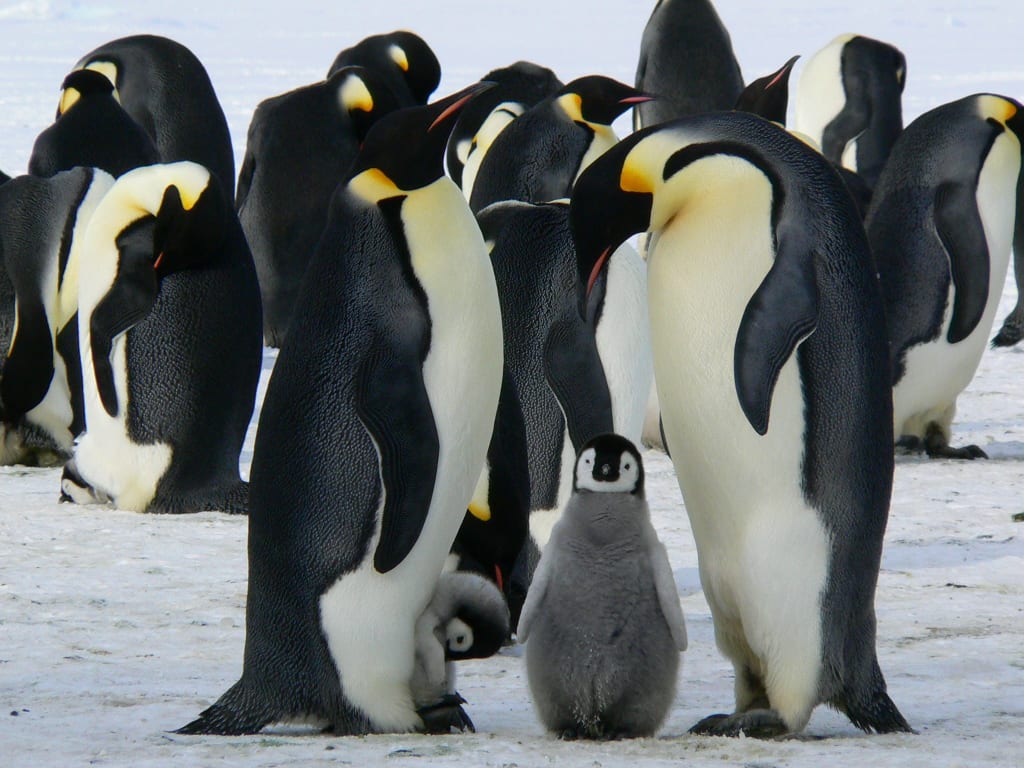 |
Penguins contribute to climate change
|
The Earth’s average temperature has been keeping on increasing at a rapid pace over the past few decades. A major problem that contributes to the increase in global temperature is the presence of greenhouse gases in the atmosphere. When the Sun’s energy reaches the Earth’s atmosphere, some of it is reflected into space and the rest is absorbed and re-radiated by the greenhouse gases.
The absorbed energy warms the atmosphere and therefore the surface of the world. This process maintains the Earth’s temperature at around 33 degrees Celsius warmer than it might rather be, allowing life on Earth to exist. Climate forcing is the change in the balance between radiation coming into the atmosphere and radiation going out. A positive radiative forcing tends on the average to warm the surface of the world, and negative forcing tends on the average to chill the surface. Likely, human activities such as burning fossil fuels, agriculture, and land clearing are the dominant causes of warming since the mid‐20th century. Because of increased human influences in the past few decades, greenhouse gas concentrations increased in the atmosphere. So, as a result, lots of energy which are emitted back to space are being absorbed by the increased greenhouse gas concentrations in the atmosphere and re-radiated to the surface of the earth. This causes an increase in absorption in the land and the oceans warming the planet more than the desired amount. In this article, we will know how penguins contribute to climate change.
 |
| Human induced climate change |
Penguins
Penguins live almost exclusively below the equator. Their stocky, short-legged mien has endeared them to people worldwide. There are a total of 18 Penguin species. Of those, we are going to see about the second-largest penguin species.
King Penguins
King penguins are considered as the brightest of all the species of penguins, as they have colorful feathers around their necks and heads. There is an estimated world population of 2 million breeding pairs with some estimates up to 3.2 million. On average king, penguins are around 15kg and 95cm high. These Penguins come into shore during the mating season and form enormous colonies. One such colony is a colony at South Georgian Island which is estimated to have over 200,000 birds. King penguins have a breeding cycle lasting for 14 to 16 months. They have the largest breeding cycle of all the penguin species. Once a young Aptenodytes patagonica does leave its colony it'll not return until a minimum of 3 years later when it’s ready to mate.
 |
| Nitrous oxide is 300 times more powerful than carbon-dioxide |
A snag that the world faces because of this amazing species is that it emits large amounts of nitrous oxide via their feces. Nitrous oxide is a potent greenhouse gas, which has a warming effect around 300 times that of carbon dioxide.
When King Penguins form colonies, they spend their time chomping on krill, squid, and fish, which are all nitrogen-rich meals. Once they fill their bellies, nitrogen is released from their feces (also known as guano) into the ground. The bacteria in the soil then convert the nitrogen into nitrous oxide. Currently, the production of nitrous oxide in these colonies is only a negligible amount when we consider the overall energy budget, but if the population of the penguins keeps on increasing, then the nitrous oxide levels in the colonies will be growing rapidly and start contributing to the energy budget.



It's very informative article for a Penguins and I'm sure a very good traffic genret this blog anchored text
ReplyDeletekeep it up dear
Good writing about penguins.
ReplyDeleteVery informative. Nicely written. Keep up the good work.
ReplyDeleteI found this article very very informative and also writing about a unique topic is not so easy. The article was very well written. Keep up the good work.
ReplyDelete